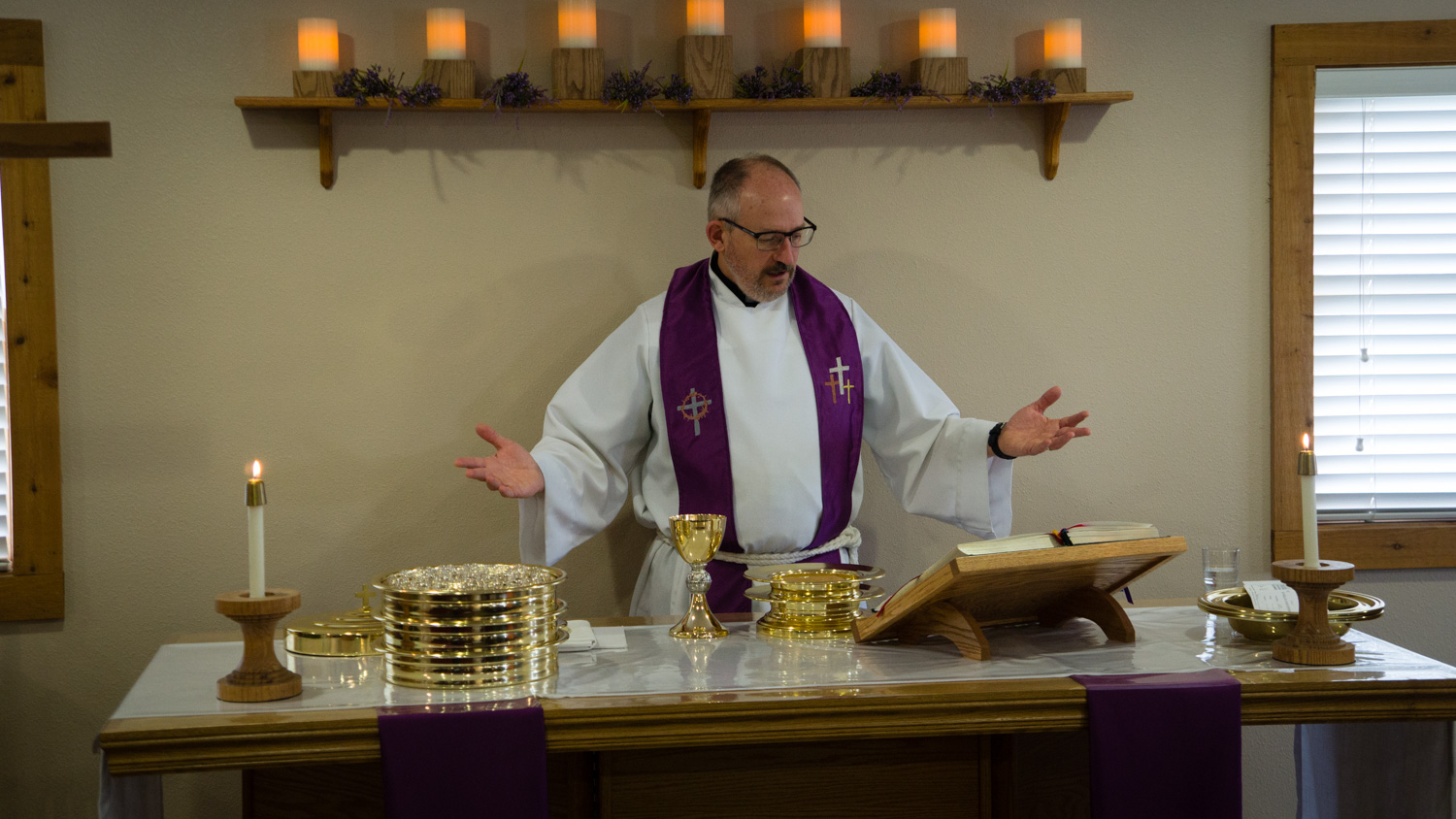The Words of Institution

Continuing our discussion on Holy Communion, this week I think it will be important to carefully consider the Words of Institution, and we will do so by utilizing the translation we are accustomed to in the Lutheran Book of Worship.
So first, what are the Words of Institution? They are the words spoken by our Lord Jesus when He first established this meal which He anticipated would be shared frequently among His disciples. You should also be aware that these words are found in four places in the New Testament. They are recorded in Matthew, Mark, and Luke’s Gospels, but not in John. The fourth place they appear is in the Apostle’s Paul’s letter to the Church in Corinth.
Let us carefully consider the words. “In the night in which he was betrayed our Lord Jesus took bread, and gave thanks; broke it, and gave it to his disciples, saying: ‘Take and eat; this is my body, given for you. Do this for the remembrance of me.’”
Before I go on, notice who the host is here. In order to serve the bread, after He had blessed it, He broke it then gave it to His disciples. He invites them to eat it, and says to them that this broken loaf given them to eat was His body given for them! He also indicates that the continuance of the meal would, in addition to giving them His body, be a way of remembering Him.
Continuing with the words, “Again, after supper he took the cup, gave thanks, and gave it for all to drink, saying: ‘This cup is new covenant in my blood, shed for you and for all people for the forgiveness of sin. Do this for the remembrance of me.’”
There is much to notice here. But for now take note of how Jesus extends this part of the meal. He hands them His cup! He mentions drinking, but does not directly refer to the wine. He calls His cup “the new covenant in my blood.”
Since You Asked…
What does the Advent Wreath Symbolize?
The circle of the wreath reminds us of eternity and our God and Father who has no beginning and no end. The green boughs indicate the hope of life being renewed. The candles represent Christ, the Light of God, who comes into this dark world to bring light and life. The four colored candles lit successively over the four Sundays in Advent, represent the patience required in waiting for Christ’s coming. As there were centuries of waiting between the Old Testament prophets and the birth of Christ, so we must patiently wait for Christ’s return at the end of the age. At Gift of Grace we wait until Christmas Eve to finally light the white center candle (the Christ Candle) to indicate that the fulfillment of the promise of God with the birth of the Christ Child on the first Christmas morn.